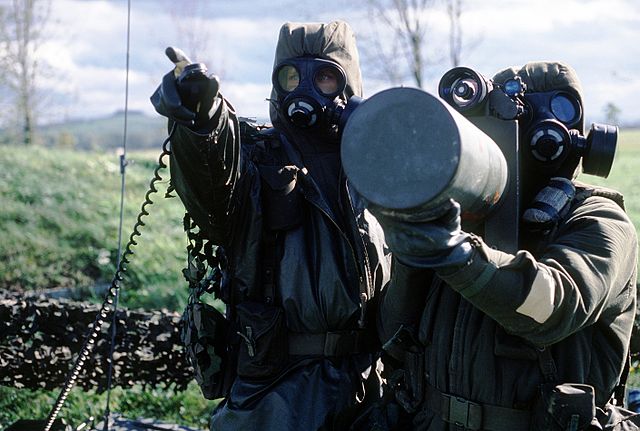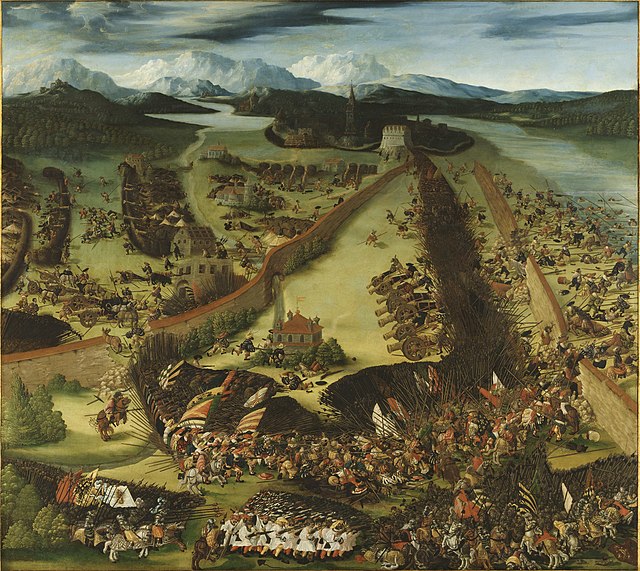Modern warfare is warfare that diverges notably from previous military concepts, methods, and technology, emphasizing how combatants must modernize to preserve their battle worthiness. As such, it is an evolving subject, seen differently in different times and places. In its narrowest sense, it is merely a synonym for contemporary warfare.
US Army soldiers with M1128 MGS variant Stryker AFVs in a combined arms operation during the War in Afghanistan, 2013
A Grumman F-14 Tomcat fighter aircraft firing an AIM-54 Phoenix air-to-air missile, 1982
Canadian Army soldiers in CBRN hazmat suits with a Blowpipe man-portable air-defense system, 1987
Republic of Korea Army mechanized infantry supported by K21 infantry fighting vehicles, 2014
Early modern warfare is the era of warfare following medieval warfare. It is associated with the start of the widespread use of gunpowder and the development of suitable weapons to use the explosive, including artillery and firearms; for this reason the era is also referred to as the age of gunpowder warfare. This entire period is contained within the Age of Sail, which characteristic dominated the era's naval tactics, including the use of gunpowder in naval artillery.
"Battle of the Dunes at the siege of Dunkirk, June 14, 1658", 1837 historical painting by Charles-Philippe Larivière depicting the Battle of the Dunes of 1658
Model of city with polygonal fortifications
The 1525 Battle of Pavia in Northern Italy. Fighting in this era became more dreadful as cannons were improved upon their medieval counterparts such as being able to destroy larger fortified walls, fire more shots with greater accuracy and repel incoming enemy charges effectively. The deadly entrapment, concentration and slaughter of troops in Visconti Park rendered it uninhabitable as is the bad omen of warfare.
Gustavus Adolphus at the Battle of Breitenfeld. Adolphus was perhaps the greatest military innovator of this era








